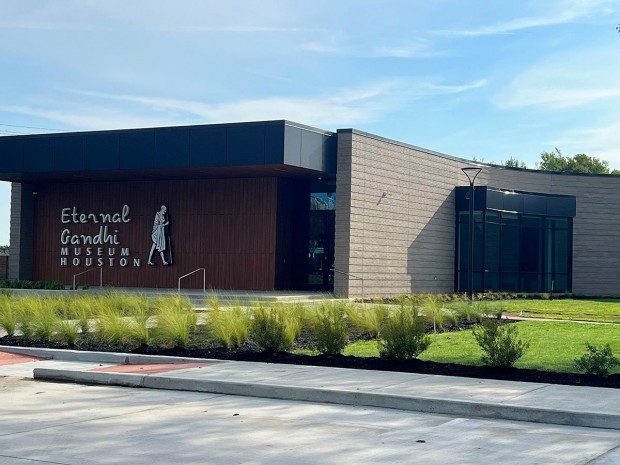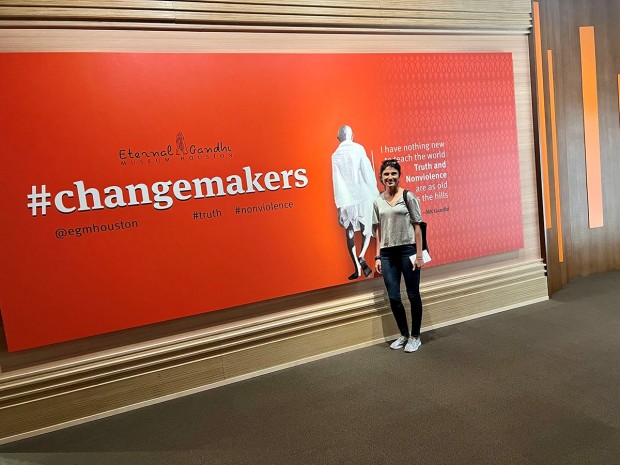Nation’s First Gandhi Museum Debuts in Houston: New Museum Promotes Peace and Nonviolence

When Houstonian Atul Kothari visited the site of Mahatma Gandhi’s assassination in New Delhi, India, he was immediately blown away by an interactive museum erected in Gandhi’s honor.
“I saw this multimillion dollar building and I thought ‘wow,” Kothari recalled of his visit that took place in 2006. “They had used the latest and greatest technology, and I thought ‘this is the way to communicate to the next generation.’” Kothari was especially impressed by a digital timeline of Gandhi’s life and an interactive activity where visitors could light up a circle when they joined hands, symbolizing the power of collaboration. Kothari wanted to see a similar museum in Houston.
Seventeen years later, Kothari’s vision came to life. He helped create a similar space in Houston. The Eternal Gandhi Museum Houston – the first museum of its kind in the United States – opened its doors to the public last month after Kothari and his cofounders, Devinder Mahajan and Manish Wani, spent years ideating, fundraising, and designing it. In 2020, the founders took the architects and designers of the museum to India to gain inspiration for the buildout of the museum. The tour took over seven days and included visits to five national Gandhi museums across four cities.
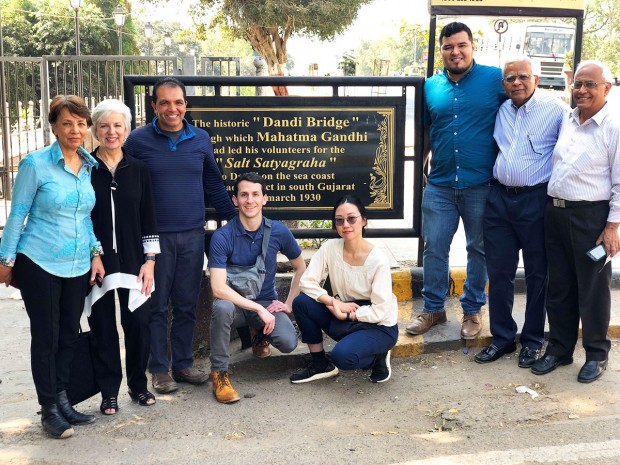
In 2020, Atul Kothari (second from right), the museum founders, as well as the designers and architects took a trip to India to gain inspiration for the Gandhi museum. Here they are pictured near the site where Gandhi began his historic salt march to defy the British government's laws on salt taxation. Pictured from left are: Lorie Westrick, Cynthia Torp, Manish K Wani, Ben Jett, Angle Cho, Noel Compean, Kothari and Vinod Patel.
The resulting museum allows visitors to learn about each phase of Gandhi’s life and the ways other civic leaders – from Martin Luther King, Jr. to Cesar Chavez – have also practiced nonviolent civil disobedience to achieve social progress.
Gandhi, an Indian lawyer and activist, successfully used nonviolent resistance to campaign for India’s independence from British rule in 1947. He was assassinated in 1948, but Gandhi’s commitment to nonviolence continues to inspire civil rights movements around the world.
The interactive museum includes three exhibits, culminating in one that’s designed to inspire visitors to consider how they can apply Gandhi’s principles of nonviolence, truth, and peace to promote positive change in their own communities.
“The third part is the most important,” Kothari said. “It’s called ‘my journey’. Now that I know what Gandhi did and what others have done, what am I going to do in my life to make the world a better place?”
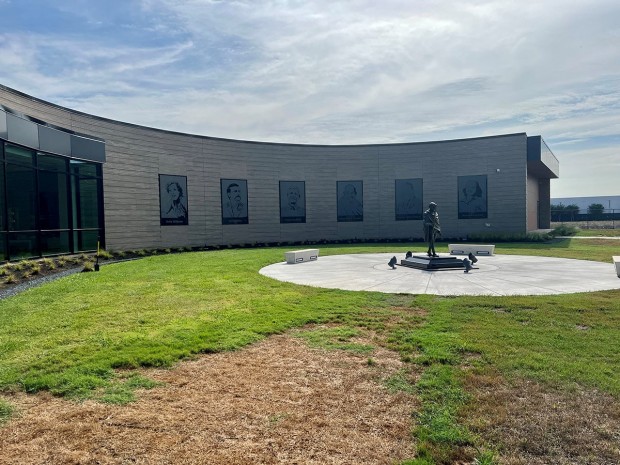
The front of the Eternal Gandhi Museum features granite carvings of civil rights leaders Betty Williams, Lech Walesa, Nelson Mandela, Mohandas Gandhi, Martin Luther King Jr., and Mairead Corrigan.
The semicircle shaped building sits on a three-acre parcel in Southwest Houston. The front of the building features six granite carvings, including one of Gandhi and five of Nobel Peace Prize winners who were inspired by him.
Inside, visitors first enter an exhibit focused on Gandhi’s early life, starting with his humble upbringing as a quiet child who was afraid of the dark and sometimes got into trouble for stealing others’ belongings. These details are included, Kothari said, to show kids that everyone has the potential to do good, regardless of where they start or how they grew up.
Visitors then learn about an incident where Gandhi, while traveling in South Africa where he worked as a lawyer, is thrown off of a train because of his skin color. This experience of discrimination inspired Gandhi to take a stand by, for example, organizing a nonviolent protest against a law that required all Indian and Chinese people in South Africa to register with the government.
“This is a story that really communicates that all of us have to take a stand,” said G.V. Krishnan, a Bellaire resident who is on the museum’s board of trustees. “That’s what we want to teach the children who come visit.”
Next, visitors learn about the salt march, a major nonviolent protest Gandhi led to challenge British rule in India. At the time, the British government prohibited Indians from collecting or selling salt, instead forcing them to purchase it at a premium from the British. In 1930, Gandhi and his followers marched to a coastal town to produce their own salt. Gandhi was arrested but the march inspired civil disobedience nationwide and even garnered international attention.
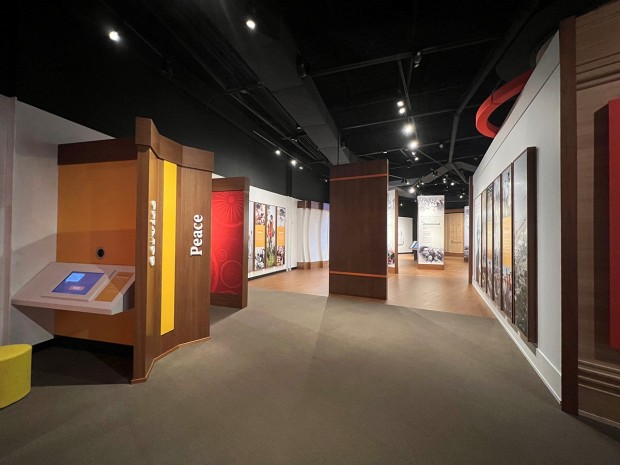
The final exhibit in the Eternal Gandhi Museum is meant to inspire visitors to apply Gandhi's principles of nonviolence, truth, and peace to their own lives.
Also included in the museum is information about other nonviolent leaders, including Greta Thunberg, the Swedish climate activist, peace activist Mairead Corrigan Maguire, and the Dalai Lama.
The exhibits were created by SolidLight, a firm based in Kentucky known for creating interactive, multimedia experiences.
The Eternal Gandhi Museum Houston is located at 12379 Riceville School Road. It is open from 10 a.m.-5 p.m. Tuesday, Wednesday, Fridays, and Saturdays, 10 a.m.-7 p.m. on Thursdays, and 12 p.m.-5 p.m. on Sundays. Tickets are $15 for adults, $12 for seniors over 65 years old and $5 for children ages 5-18. Children under five enter for free.
Upcoming events include hosted by the museum include a 5K Walk for Peace on Oct. 1 and a Pedal for Peace bike ride on Oct. 8.
Want more buzz like this? Sign up for our Morning Buzz emails.
To leave a comment, please log in or create an account with The Buzz Magazines, Disqus, Facebook, or Twitter. Or you may post as a guest.


